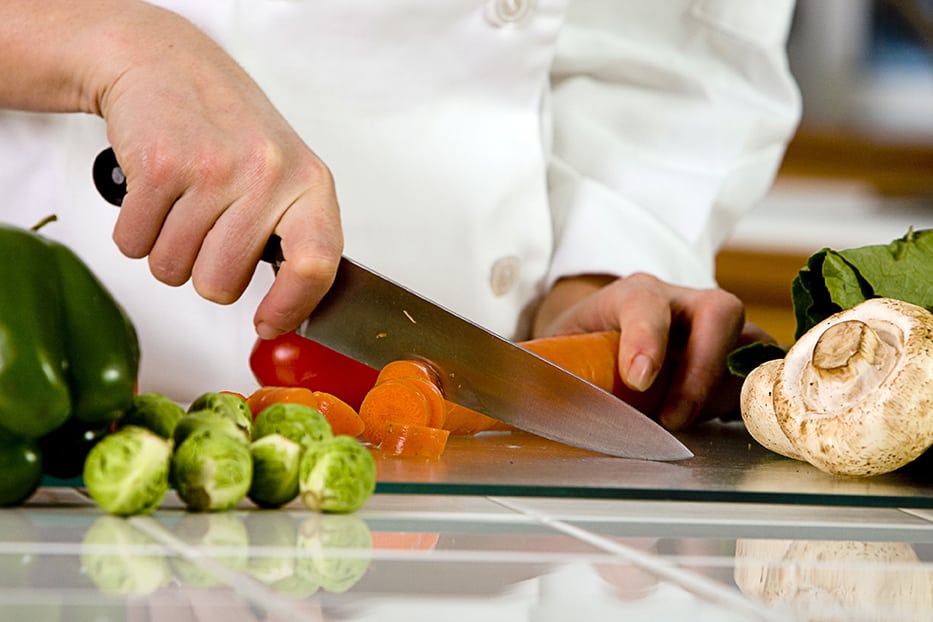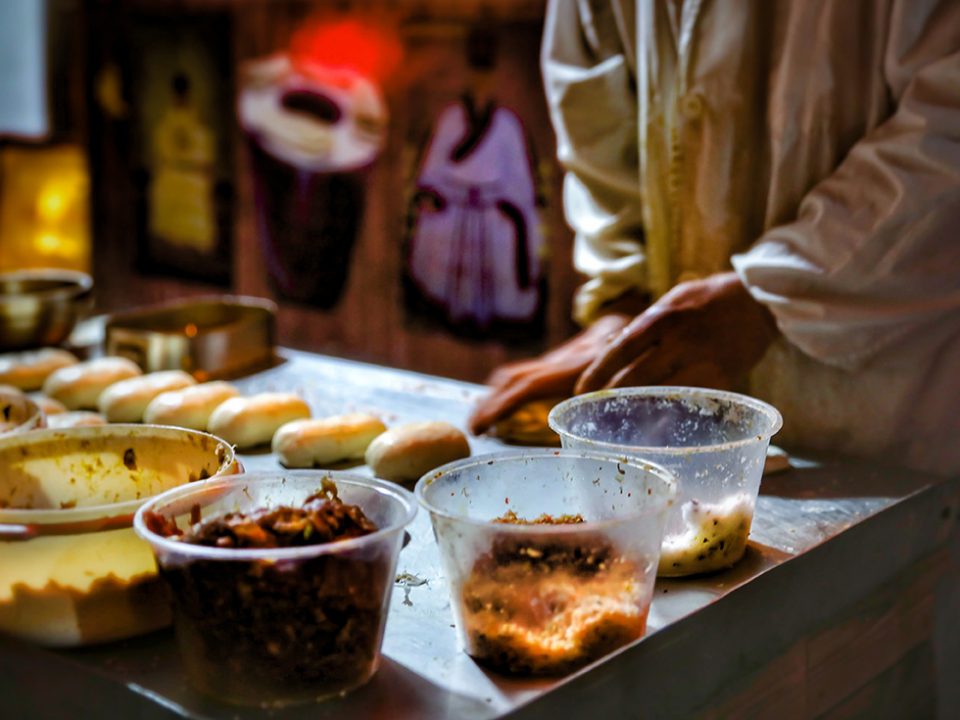Use a HACCP Plan for Uncooked Menu Items

Temperature Data Log Options Pros and Cons
May 6, 2018
Hand Washing Techniques for Restaurant Food Handlers
July 1, 2018Implementing a HACCP plan in your restaurant can help you avoid outbreaks from uncooked menu items. In the last few years, there have been large outbreaks with raw sprouts, romaine lettuce, tomatoes and onions. Just this week, the CDC announced a new and fast-moving outbreak connected to cut melon. Fortunately, cooking kills most pathogens that contaminate food, so preventing contamination and an outbreak is well within your control.
There’s no way restaurant operators can prevent contaminated produce from entering their kitchens. As a restaurant owner or manger, what you can do is put as many controls in place to make sure this contaminated product doesn’t result in sick customers. You can start by implementing a HACCP plan for produce and uncooked menu items.
First, it’s important to understand how uncooked food items such as the ones mentioned above are making people sick. What do they all have in common? Well, quite a few things, actually. They are grown in or on the ground and can be deadly if:
- Served without being washed
- Held at improper cold-holding temperatures
- Stored in an unsanitary environment throughout the entire supply chain
- Served without the cooking or kill step
To prevent these items from causing illness, restaurants must implement a HACCP plan and practices from the time the product is delivered until it goes out on a plate to a customer.
HACCP: What Does It Mean?
HACCP, or Hazard Analysis Critical Control Point, is a management system that helps identify hazards that can potentially contaminate food throughout the entire storage and preparation process.
Your HACCP Plan
Follow these steps to create your own plan.
1. Receiving a Food Order
When receiving an order, check the condition of the product. Take temperatures, look for pests, ask questions. Is it fresh, unadulterated, and the top quality you demand from your supplier? You should assume the food has been contaminated in some way before it was delivered to your restaurant. Keeping this in mind while assessing the other steps in the product’s life span in your kitchen will help you determine the best way to handle, store and prep it.
2. Food Storage
It’s important to store product in a way to prevent contamination from its storage place. If it’s in a reach-in or walk-in, make sure the ambient (air temperature) is below 40 degrees F. The best range for ambient temperature in a cold-holding unit is 35 degrees F to 40 degrees F. Make sure the product is stored away from raw meats or other food items that can cross-contaminate it. This can be accomplished by storing it on the top shelf or upper shelves. Lastly, make sure the unit is clean and free of mold.
3. Washing Food
Before the prep process begins, wash all produce being used. Whole melons, leafy greens, onions, sprouts, etc., should all be washed thoroughly in a clean sink before any prep begins. Have you ever looked at the delivery vehicle your produce was transported in or the warehouse it came from? Most likely it was transported in multiple trucks and many warehouses before it came to you. Assume they are all dirty.
4. Food Prep Process
Many of the products that are served uncooked most likely will go in salads. These require quite a bit of prep. Slicing, dicing and cutting provides the potential for contamination if best practices aren’t followed throughout the whole process. The prep area and equipment used should be clean and sanitized before the prepping begins, and staff should wear gloves or use utensils to prevent bare hand contact with the product. After prep, put the product back into a cold-holding unit as soon as possible to cool it down again to prevent any pathogens present from growing.
5. Final Prep Stage
When the order is made, and the menu item is going through its final prep stage, maintain some of the same practices we’ve already discussed. Staff should prevent bare hand contact and the prep surface should be clean and sanitized. If possible, a dedicated employee should be tasked with preparing menu items that are all ready-to-eat. Having an employee prepare salads and also handle raw meats is a recipe for disaster. Make it easy! One person should prepare ready-to-eat items and someone else should handle raw meats to eliminate the chance for cross-contamination at the very end of the process.
6. Serving Food to Customers
Just because the item has left the kitchen doesn’t mean there still isn’t the potential for contamination. Let’s talk about the servers delivering the plates of food to customers. When was the last time they washed their hands? Did they recently use the bathroom, handle their phone or bus dirty dishes? Did they come to work sick? If servers are not diligent about hand washing or good hygiene, they can contaminate the food just by taking it from the kitchen to the table. This is true for all menu items, not just the salads. Preventing foodborne illness must be a priority at a restaurant at all times. Most large-scale outbreaks recently have involved uncooked menu items.
Conclusion
In conclusion, you should assume all food delivered to your restaurant is contaminated. Be proactive in training restaurant employees on a HACCP plan. Putting a HACCP plan in place to identify hazards that could contaminate leafy greens and uncooked menu items is a smart way to protect your customers from illness.
To learn more about HACCP:






